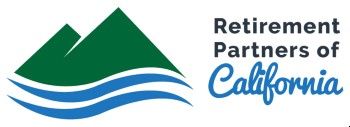SECURE Act 2.0: Changes to Retirement Plans in 2023
 Summary
Summary
- The SECURE (Setting Every Community Up for Retirement Enhancement) Act was first signed into law on December 20, 2019.
- SECURE Act 2.0 was signed into law on December 29, 2022, and adds 90+ new retirement plan provisions.
- Secure Act 2.0 is aimed at helping promote retirement savings by mandating auto-enrollment for new plans, boosting tax savings for small employers, and providing more flexibility to savers.
What else is in SECURE 2.0?
With 90+ provisions in SECURE Act 2.0, there’s a lot to parse through. Below are some of my favorite highlights for employers and employees.
Notable Secure Act 2.0 Changes for Employers
- SECURE 2.0 extends the time for employers to make beneficial discretionary retirement plan amendments. Employers can now retroactively amend a pension, profit-sharing, or stock bonus to increase non-elective benefits accrued under the plan in the preceding plan year. This would enable employers with existing 401(k) plans to make plans more favorable to rank-and-file workers after the end of a plan year and maximize an employer’s tax benefit.
- Effective 1/1/24, SIMPLE plan sponsors can convert to a safe harbor plan mid-year. In years prior, SIMPLE plans could not be terminated until year-end.
- Currently, mandatory distributions, if noted in plans, are capped at a vested balance of $5,000. Secure 2.0 understands this amount has not been adjusted for inflation, and increases the maximum to $7,000. This allows employers to remove more terminated participants from their plan and assist in keeping the number of account balances low, which can assist in avoiding a plan audit.
- It allows sole proprietors to make retroactive first-year elective deferrals if they sponsor a Solo(k) plan.
- Finally, SECURE 2.0 would change top-heavy testing for plans with “excludable employees”. These new provisions would allow employers to perform top-heavy testing separately on excludable and non-excludable employees. Due to upcoming “long-term, part-time” employee provisions, this could help small and medium businesses that are required to fund an unexpected top heavy benefit each year.
SECURE Act 2.0 and the future of retirement savings
Retirement Partners of CA supports SECURE Act 2.0. We consider it an instrument that could help reduce the retirement savings gap. However, the bill alone won’t close the retirement savings gap.
Here are some plan features we would LOVE to see soon
- Adding default eligibility could expand access to millions. 2.74 million employees started new jobs in the first half of 2022, and many of those who work for companies without auto-enrollment (let alone access to a way to save for retirement through work). While SECURE Act 2.0 eventually requires auto-enrollment, increasing default contribution rates (from 3% to 6% or more) could help employees save more.
At Retirement Partners, we believe in providing all small and medium-sized businesses with access to retirement benefit plans. SECURE Act 2.0 helps advance this mission—but we believe there’s more work to be done.
This information is not intended as authoritative guidance or tax or legal advice. You should consult your attorney or tax advisor for guidance on your specific situation. In no way does advisor assure that, by using the information provided, plan sponsor will be in compliance with ERISA regulations.







